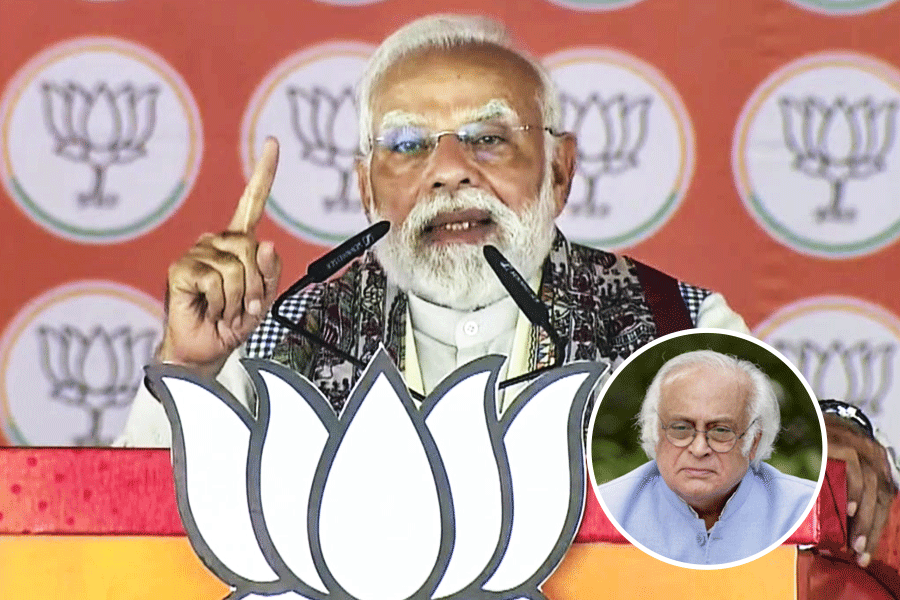.jpg)
I’ve been reading about a special gift that is much in demand this Diwali. Apparently, some black marketers are celebrating the festival with arhar dal. I am a traditionalist — and think Diwali has to be marked with not just suitable gaiety and fervour, but with hordes of sweets. However, if you’ve had enough of sandesh and rasgulla this season, and wouldn’t like to splurge on arhar, you could give some thought to Rajasthani sweets.
There was a time when I thought Rajasthani sweet was an oxymoron. Over the years, though, I have realised that the region has a large variety of sweets. In fact, one strong school of thought actually believes that the rasgulla went from Rajasthan to Bengal (or Odisha, depending on which side of the rasgulla border you are from). Traders from Bikaner carried it to Bengal, this school believes.
But let’s not quibble over the rasgulla now that Diwali — the festival of lights — is just a few days away. Instead, let’s raise a toast to Rajasthani sweets. You’ll find some of the sweets, such as pedas or badam halwa, a rich dessert prepared with a paste of almond, in many other parts of northern India. But a few sweets — such as mawa misri, a preparation of thickened milk with sugar crystals — are very typically Rajasthani.
.jpg)
One of my all-time favourites is the kalakand, a delicious and creamy sweet prepared with milk. “It’s a classic of Alwar in Rajasthan,” says Mayank Kulshreshtha, the executive chef of ITC Sonar in Calcutta. “It’s rich in milk protein and prepared with a danedar (grainy) reduction of milk and sugar. And it’s delicately flavoured with cardamom powder,” he says.
Contrary to popular belief, Rajasthan has a lot of milk-based sweets. In fact, Rajasthan is known for the quality of its milk, which is why products such as khoya are important ingredients in sweets. “Gond ladoo, for instance, is prepared with khoya,” points out Maharaj Kailashchand Meena, who is the Rajasthani food specialist at the hotel. For this, you need to cook acacia sap (it’s an edible gum) with semolina, khoya, sugar and rose water. Once it’s a thick mass, round them into small crumbly balls.
These days, Diwali is celebrated with various kinds of sweets, but ladoos are specially prepared for the festival.
.jpg)
Elsewhere you have besan ladoo, or motichur ladoo, but in Rajasthan, along with the gond ladoo, a sweet for the season is churma ladoo. “This is made with roasted whole wheat flour, ghee and sugar, which is then flavored with saffron and fresh rose petals,” chef Kulshreshtha says.
One reason why such sweets are specially prepared for Diwali is the fact that the festival underlines the advent of winter. Once the temperature starts dropping after Diwali, sweets — prepared with heat-inducing ingredients such as ghee, nuts or gond — warm the body. And though most of the sweets can be had through winter, it’s Diwali that ushers them in.
.jpg)
Chef Pranay Singh, the executive chef of Swissôtel Kolkata Neotia Vista, is from Rajasthan, and recalls all these sweets with nostalgia. His Diwali favourite is a sweet that is often associated with Holi — and that’s the khoya-filled gujiya. “And we prepare various kinds of ladoos during the festive season,” he says.
It’s not just ladoos, of course. Among other Rajasthani delicacies that you’d see this season are kaju katli — thin slabs prepared with cashewnut paste — and dilkusha barfi. The latter, chef Kulshreshtha explains, is a barfi prepared with soaked chickpeas and gram flour, ghee and sugar, and flavoured with cardamom.
As you can see, the Rajasthani dessert trolley is full of goodies. Therefore, let’s stop bickering about the rasgulla this Diwali, and spread light (and cheer) with sweets that are equally delectable.
Photographs by Subhendu Chaki
Courtesy: ITC Sonar, Calcutta

.jpg)









